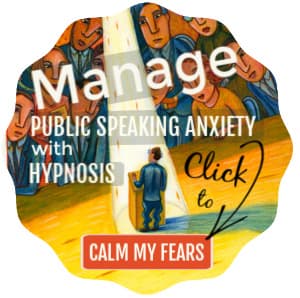- HOME ›
- How to write an introduction speech
Introduction speech for a guest speaker
How to write a good introduction speech step by step
By: Susan Dugdale
If you've been asked to give the introduction speech for a guest speaker you're in the right place.
Everything you need to prepare it is here. Follow the steps and you'll have an introductory speech you'll be proud to deliver.
What you'll find on this page:
- an overview of the purpose of an introduction speech for a guest speaker
- the content you're expected to cover
- an organizational pattern or template to follow
- an example introduction speech
- 6 important tips to use to ensure your speech is a success
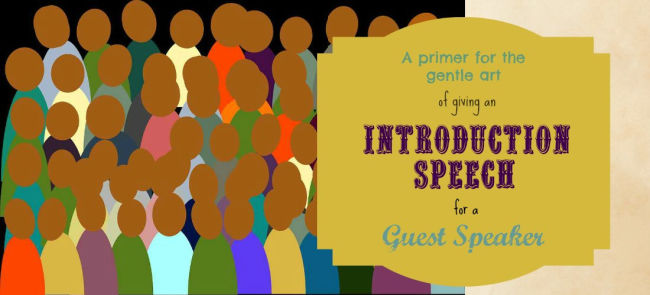
The function of an introduction speech
Let's start with the purpose of the speech. When you understand what the speech is supposed to achieve you'll find it much easier to write.
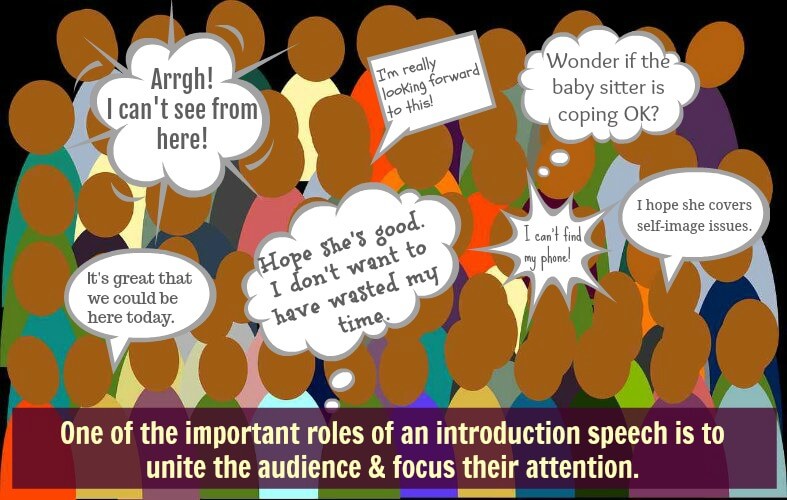
The job of an introduction speech is to:
- introduce your guest speaker,
- give them a warm welcome,
- and create ready-and-motivated-to-listen anticipation in the audience.
Essentially you are the warm-up act. Your task is to focus and unite the audience members, to get them ready for what is to come.
To prepare your introduction speech you'll need:
Do make sure you can say their name properly and easily! If you're in doubt get the correct pronunciation from your guest speaker and practice.
Also ask if they have personal pronoun preferences. Eg: they/them, she/her, he/him...
- the guest speaker's biography or the credentials of the speaker
Sometimes you'll be given what the guest speaker wants said about themselves.
If that isn't provided select events, achievements and qualifications to support establishing him/her as an authority within the context of the occasion.
And do check that your guest is happy with what you are preparing to say about them. - attention getters or a surprise to delight the audience, something that is not commonly known, and something revealing the personality or humanity of the person.
How to organize your material
- Build excitement or interest by adding one piece of information after another.
- Make the speaker's name and their speech title, the climax and end of your speech.
To show you how it's done I've put together an...
Introduction speech example
Let's put the speech in context to help you make sense of it
The setting for this fictitious introduction speech is a conference for an organization called "Women in Leadership". The audience are primarily women drawn together through an interest in leadership roles.
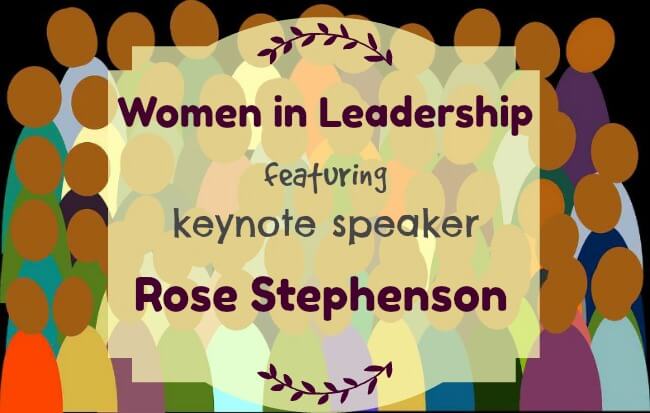
At the end of the speech, the speaker will lead the clapping as Rose Stephenson, the keynote speaker being introduced, takes center stage.
Now here's the introduction speech text.
Now here's the introduction speech text
"She's been a stalwart member of "Women in Leadership" for the last ten years. Over that time she's served in every office: secretary, treasurer, chairperson, chief fundraiser, education officer... to name just a few, and in some roles several times over.
Her passionate dedication to promoting public speaking as an important component of empowerment is inspiring. We estimate that she has personally mentored at least 100 new speakers and has set an extraordinary "yes, you can" example for many more.
We see her as capable, confident and fluent: never at a loss for words. But what you probably don't know is that this women once stuttered, stammered and blushed.
Yes, she was often temporarily paralyzed, struck dumb by the mere thought of standing in front of an audience to speak.
How she got from awkward tongue tied silence to becoming an eloquent front line spokesperson is the story she will share with us tonight.
Ladies, without further ado, it's with great pleasure, I give you... Rose Stephenson on "Speaking To Lead!"
Say the speech out loud! Use it as a template!
Try saying it out loud to get the flow of it.
If you like it, use it as a model for the introduction speech you need to write.
6 tips to make your introduction speech successful
1. Consider tone and language use
Is what you've prepared appropriate for the occasion, audience and your guest speaker? Have you avoided using a string of clichés?
2. Check the length of your speech
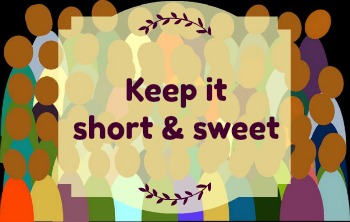
Pertinent and pithy: a short speech is what you want. One to two minutes should be enough.
Test it out loud with a timer and trim if necessary.
My example speech is 171 words long. That will take approximately 1 minute 30 seconds to say depending on the speaker's rate of speech.
For more on: the number of words per minute in a speech. (This page has estimations for the number of words per minute spoken at a slow, medium and fast rate for speeches from 1 - 10 minutes long.)
3. Resist exaggerating or "puffing up" the speaker's achievements
First impressions count. You don't want to talk about your guest in a way that may embarrass and cause the audience to question their right to be there.
4. Always check your facts
Beware the horror of getting your facts muddled and, if you wish to mention something that may be sensitive, ask permission before you announce it in front of an audience.
5. Remember you are not the main speaker, or the star of the show
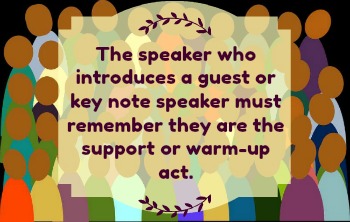
You've done a good job when you cover just enough to make the coming speech eagerly anticipated.
Please do not stray into telling the audience what the guest speaker's speech will cover in detail. That's terribly unfair on the speaker!
6. Rehearse your speech
Practice out loud until you are confidently fluent and able to convey the pleasure or enthusiasm the audience needs to get them in the right frame of mind.
For more: how to rehearse a speech well
For more: how to use your voice expressively
Other related pages you may find useful:
- How to give a self-introduction speech (with an example of a brief speech to introduce yourself to fellow workshop participants)
- How to write a welcome speech (with an example of a short welcome speech to open an event)

